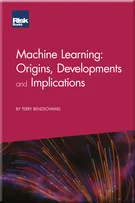Information theory
Information theory
Introduction: Money is information on the move
Trends in digital money
How digital money creates new operational risks
Operational risk and cryptography
Operational risks of digital money
Commercial bank digital money
Private digital money, including cryptocurrencies
Public digital money, including CBDCs
Impact of digitisation on operational risk management
Impact of digitisation on operational risk organisations
Impact of digital money and operational resilience on ORM processes and people
Impact of digitisation on operational risk management in the future
Theory of money
Information theory
Classical cryptography
Modern cryptography
Conclusion
Acknowledgements
Appendix 1: Significant contributors to information theory and cryptography
Appendix 2: Timeline of significant contributions to information theory and cryptography
Appendix 3: Relevant information standards
Appendix 4: High-level risk registers
Bibliography
Shoshana Zuboff, who authored the groundbreaking book In the Age of the Smart Machine (Zuboff, 1989), said perceptively: “Technology makes the world a new place”. Although the same comment could be made about other world-changing technologies – such as the Boeing 747 jet airliner, which revolutionised modern business and helped usher in the age of globalisation – the technology that Professor Zuboff was referring to is information technology.
Information technology as we know it today is based on Claude Shannon’s classical “information theory” (Shannon, 1948), which is all about adding information to information to validate it, and also to obscure it – for example, to disguise its contents so that critical information cannot be read, or to “sign” it so that its source can be properly identified. The chapter describes the links between Shannon’s information theory and cryptography.
The chapter first describes some of the key concepts of information theory as they relate to operational risk, and specifically in the context of digital money. For a word that is widely used in everyday conversation, “information” is a surprisingly complex and ill-understood concept. It has many
Copyright Infopro Digital Limited. All rights reserved.
As outlined in our terms and conditions, https://www.infopro-digital.com/terms-and-conditions/subscriptions/ (point 2.4), printing is limited to a single copy.
If you would like to purchase additional rights please email info@risk.net
Copyright Infopro Digital Limited. All rights reserved.
You may share this content using our article tools. As outlined in our terms and conditions, https://www.infopro-digital.com/terms-and-conditions/subscriptions/ (clause 2.4), an Authorised User may only make one copy of the materials for their own personal use. You must also comply with the restrictions in clause 2.5.
If you would like to purchase additional rights please email info@risk.net











